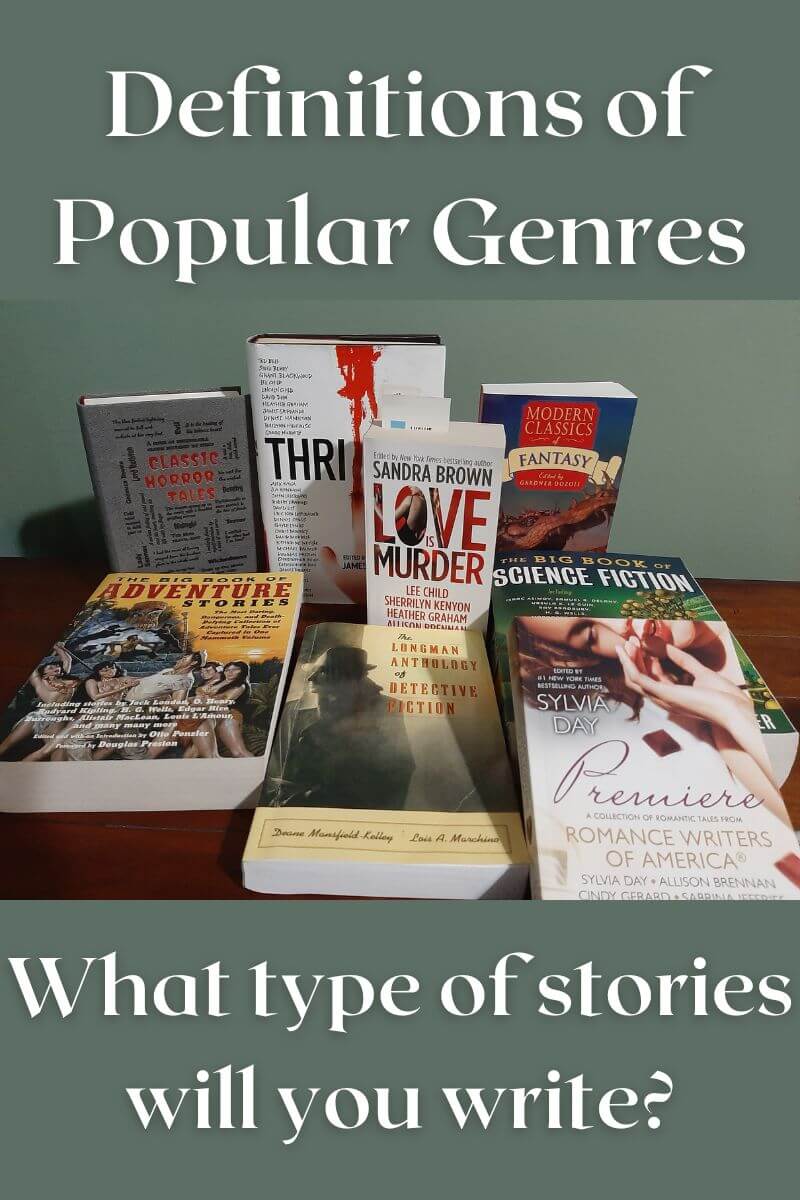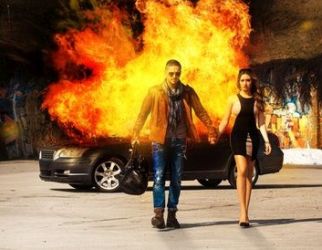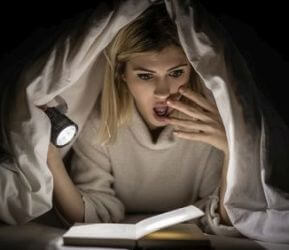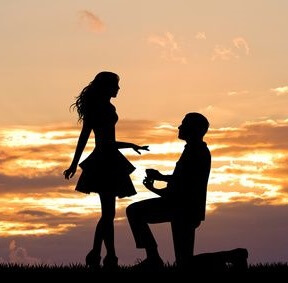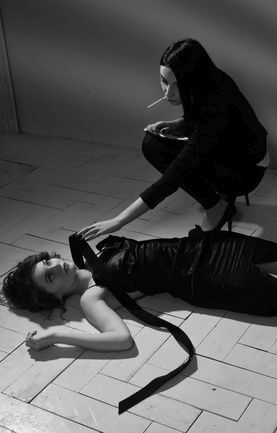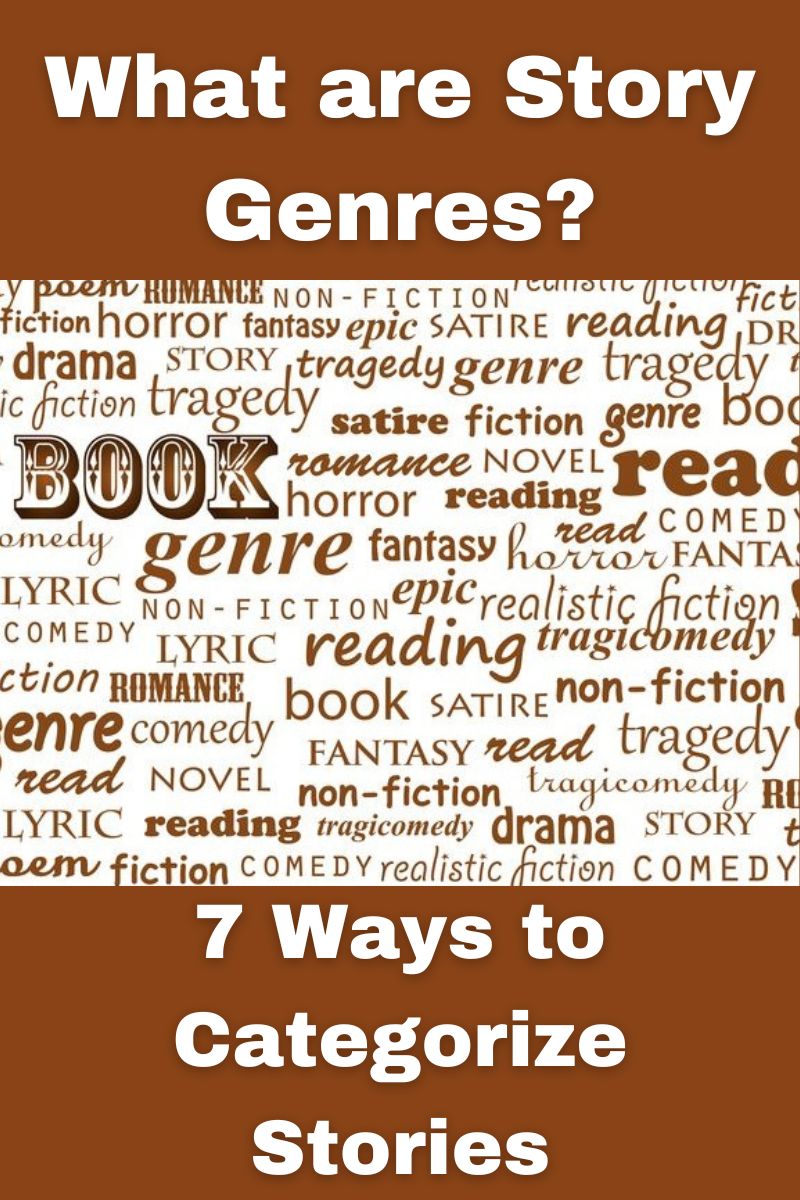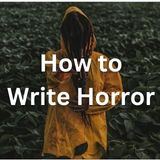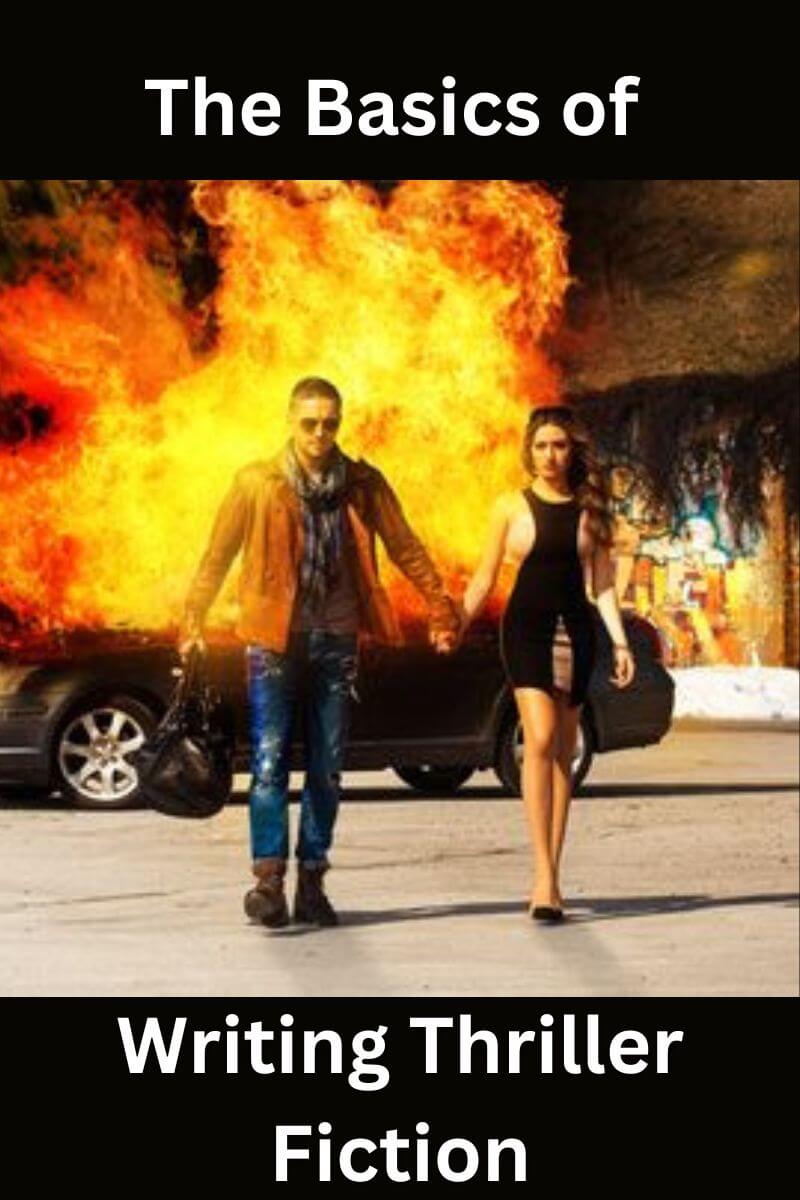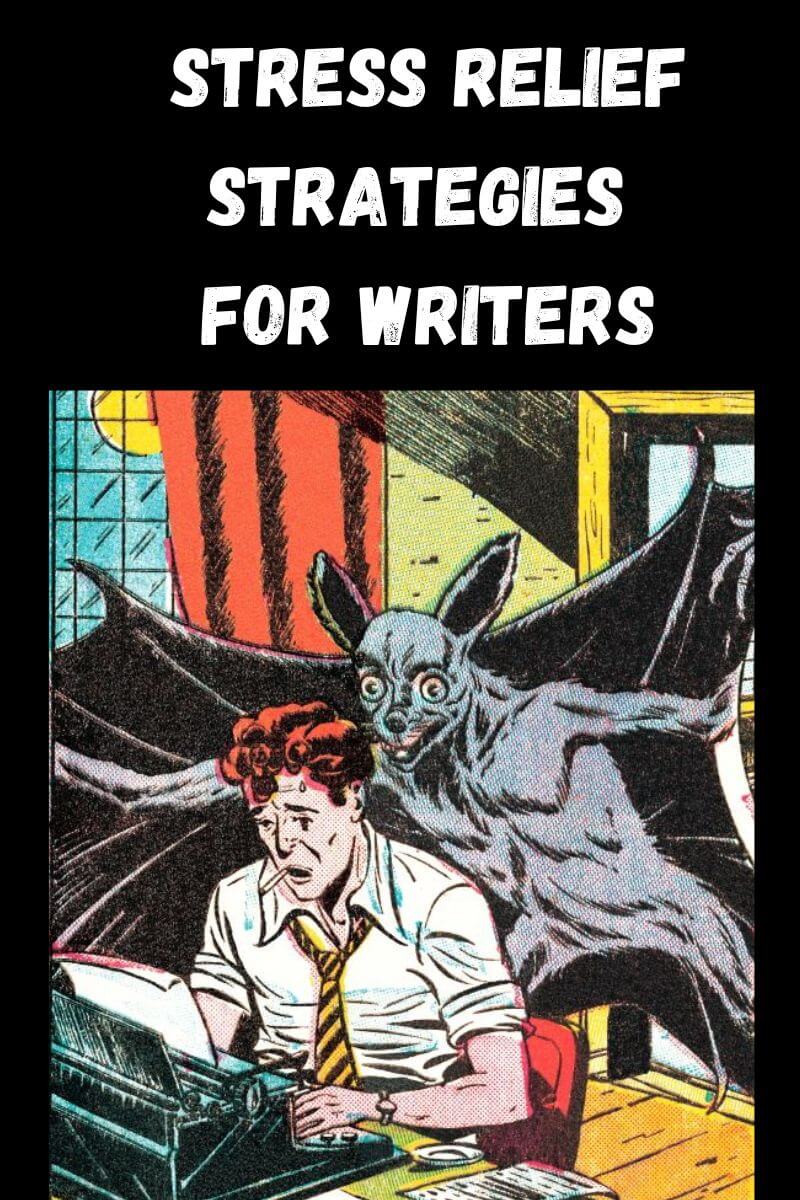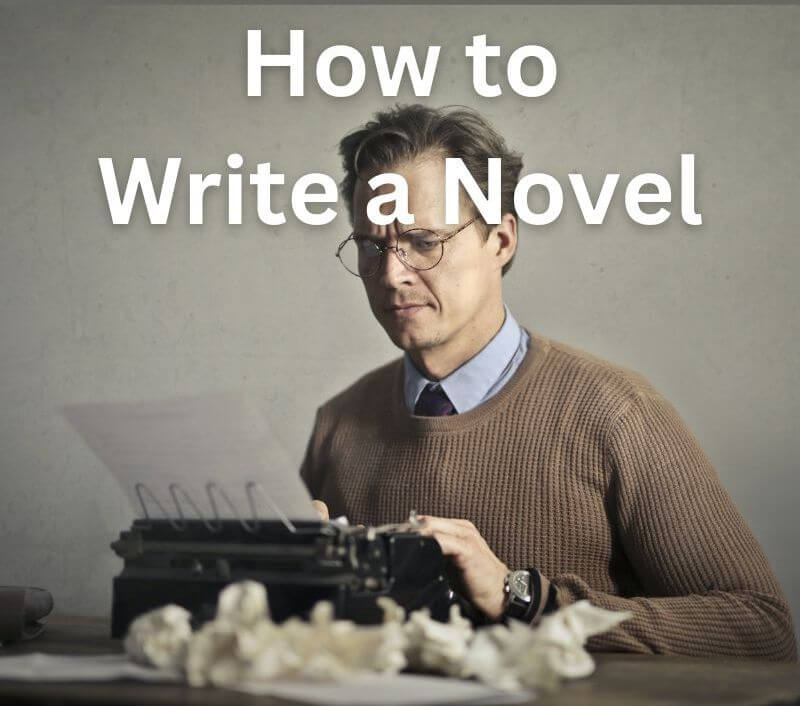Genre Definitions: A Partial but Practical List
By Glen C. Strathy
Below are brief genre definitions arranged to help clarify what sets different types of stories apart.
The overall scheme for genre definitions is one I have borrowed from The Readers' Advisory Guide to Genre Fiction by Joyce G. Saricks, as it is the most sensible I have seen to date.
(Note that, as a Amazon Associate, this page earns a small commission if you purchase that book after clicking on its title.)
Please note...
1. The list is not complete. So many small subgenres and crossover genres exist that it would be impossible to list them all. I've tried to stick to the most common genres and subgenres that you will come across.
2. Crossover and subgenres usually have a multi-part label. That is, they may be simultaneously labeled by...
a. Audience (e.g. YA, LGBTQ, inspirational)
b. Setting or milieux (e.g. Historical, Futuristic, Military, Paranormal)
c. Reader Experience (e.g. Romance, Mystery, Adventure)
For the most part, I have omitted audience labels.
3. While I generally see the setting label as less important than Reader Experience, readers don't necessarily see it that way. I have tried to put subgenre definitions under the genres most people associate them with.
1. Adrenaline Genre Definitions
Adrenaline Genres are distinct in the way they take the reader on an exciting, page-turning, roller coaster of a journey
1.1: Adventure
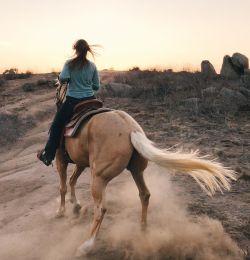 Adventure: stories about traversing dangerous terrain with purpose.
Adventure: stories about traversing dangerous terrain with purpose.Stories which a hero or group of heroes overcome obstacles and dangers to accomplish a worthy objective. Usually involves a journey through a terrain or world previously unknown to the hero(es).
Adventure stories may take the form of a quest to obtain or be rid of a powerful object, perform a rescue, defeat a monster, win a place in society, or simply survive in a hostile natural environment.
Adventure has sometimes been called Male Romance, partly due to the traditional shortage of female characters. Also, many of the original Romance stories were stories in which a hero found his true love during the course of an adventure. This genre later split into two streams. The love stories became a separate genre, now called Romance (see below), which tended to appeal to female readers, while Adventure evolved into a genre that appealed more to male readers.
These days, we see a lot more female main characters in Adventure stories, so it's becoming inaccurate to call Adventure, "Male Romance."
Subgenre Definitions for Adventure
Military Adventure
As above, but the team of heroes consists of professional soldiers, who pursue an often military objective.
Historical Adventure
An Adventure story set in a historical period.
Chivalric Romance
An adventure story set in Medieval times, usually concerning a quest undertaken by a knight in armour.
1.2: Thriller
Stories in which the hero uses the specialized skills and knowledge of his profession to defeat a power-hungry villain or successfully deal with a dangerous threat.
Click here for tips on How to Write a Thriller.
Subgenre Definitions for Thriller
Thriller subgenres are distinguished by the hero's particular area of expertise. Common areas include espionage, law, medicine, finance, science, military, history, information technology, politics, or crime.
Crime Thrillers vs. Capers
Unlike most Thrillers, which are told from the point of view of someone trying to prevent a crime, Capers and Crime Thrillers are told from the point of view of professional criminals and the stories are about the commission of a crime. Of the two, Crime Thrillers are generally darker in tone, while Capers are lighter and may involve humour.
1.3: Suspense
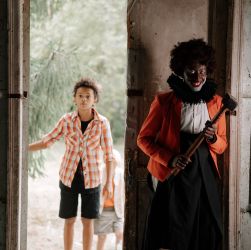 Suspense: stories about innocent people walking into traps.
Suspense: stories about innocent people walking into traps.Stories in which a villain stalks or lays a trap for the main character (traditionally female) who is unaware of the villain's identity until the climax, at which point the main character manages to escape. Suspense is created by the fact that the reader sees the trap closing long before the main character does.
Subgenre Definitions for Suspense
Suspense stories may be either hard or soft-edged. Hard-edged suspense has more graphic content and focuses more on police procedure. The main character may be a police officer or former police officer. Soft-edged suspense has little graphic content or policework.
1.4: Romantic Suspense
Stories in which the main character (traditionally a woman) is placed in a perilous situation which she overcomes in part
by learning to trust someone with whom she develops a romantic relationship. For most of the story, the heroine has good reason to suspect her love interest is untrustworthy, but he (or perhaps she) turns out to be trustworthy by the end.
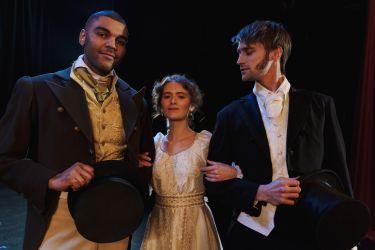 Romantic Suspense: Stories with both love and danger.
Romantic Suspense: Stories with both love and danger.Subgenre Definitions for Romantic Suspense
Traditional vs. Contemporary
In traditional Romantic Suspense, the heroine must correctly choose between two love interests, one of whom is trustworthy while the other is the villain. Of course, she has no idea who is actually trustworthy until the climax. In contemporary Romantic Suspense, the heroine has only one love interest -- but she must still learn to trust him.
Gothic Romance
Traditional Romantic Suspense (as well as Horror) descends from the Gothic novel. Gothic Romance falls between the two. A Gothic Romance generally involves an innocent young woman in an isolated old setting (such as a castle or mansion) full of dark secrets with a foreboding atmosphere. There is typically a mystery, an ancient curse, supernatural evil, or perhaps just a horrible secret from the past that arises and threatens the young woman, who must be rescued by her male love interest. The villain is often an older man. Hence, these stories are often metaphors for sexual relationships, with the villain representing a father figure with incestuous desires and the rescuer offering a healthy relationship.
Popular crossovers of Romantic Suspense include...
Historical Romantic Suspense
Paranormal Romantic Suspense (e.g. the love interest or villain is a monster, such as a vampire or werewolf)
2. Emotion Genre Definitions
The emotion genres includes stories that attempt to elicit a particular emotional response which their fans love to experience.
2.1: Horror
Stories in which the main character faces a supernatural threat (usually a monster). The story is written to induce fear in the reader.
Click here for 6 Dark Secrets You Can Use to Write a Horror Story.
Subgenre Definitions for Horror
Visceral vs Slow Build.
Slow build describes Horror stories in which violence or graphic content may only appear toward the end and there is a slow build from normality to the horrific. Visceral Horror may be written from the monster's point of view and introduces graphic violence from the outset.
Splatterpunk:
Visceral Horror stories notable for the prominent spilling of blood.
2.2: Romance
Stories about how the main character (almost always a woman) develops a romantic relationship that culminates in true love.
Click here for tips on How to Write a Romance.
Subgenre Definitions for Romance
Historical Romance
Set in a historical period such as Regency, Victorian, Medieval, etc. May include elements of Adventure, Mystery, or Espionage Thrillers as ways to bring the couple together.
Alternate Reality Romance
May incorporate elements of Fantasy (magic), Paranormal characters (e.g. vampires), Time Travel, or futuristic settings.
Gay/Lesbian Romance
Gay (male-on-male) romances are the exception to the rule about female main characters. Both these and lesbian romances have grown in popularity in recent decades.
2.3: Women's Fiction
 Women's Fiction: uplifting, realistic stories about women's lives and relationships.
Women's Fiction: uplifting, realistic stories about women's lives and relationships.Stories in which a woman overcomes life's challenges to achieve fulfillment. Generally, these feature contemporary settings and concern problems such as career, family, or friendship.
Unlike other genres, the kinds of challenges the protagonists in Women's Fiction face are those which the majority of female readers will likely experience in their own lives. Hence the challenges seem more realistic.
Unlike Romance, these stories are not "love stories," though many types of relationships can play a role.
Subgenres of Women's Fiction
Chicklit
Like Women's Fiction, but especially featuring younger women who are struggling with typical challenges such as career and relationships. Often these feature wit and attitude.
3. Intellect Genre Definitions
The intellect genres offer readers a more intellectual experience. They are genres that focus on ideas or problems to be solved through logic and analysis.
3.1: Mystery
Stories in which the main character investigates a crime, usually murder, and
succeeds in discovering who committed it, how, and why. They are fun for readers who like to play "armchair detective" and work out who the villain is before it is revealed.
Click here for tips on How to Write a Mystery.
Subgenre Definitions for Mystery
Amateur Detective Stories
Mysteries in which the detective is not a professional investigator. The crime is usually solved through deductive reasoning, amateur psychology, or specialized knowledge rather than criminology or forensic science.
Cozies
Amateur
Detective Stories which are not overly disturbing for the reader.
Violence is minimal. Settings are usually not big cities. Murderers
are usually not psychopaths. Characters tend to be middle-class or higher.
Police Procedurals
Mysteries in which the detective is a police officer, or a team of officers. Like the name suggests, these stories feature an authentic portrayal of police work. May include more forensic science and more lower class characters than Amateur Detective Mysteries.
Hard Boiled PI Stories
Mystery stories in which the detective is a private investigator. Often the main character is a jaded loner who employs wise cracks and a tough exterior as a defense. These stories are usually set in big cities and involve lower, criminal classes as characters. Privileged, upper-class characters, the city, and institutions in general are usually portrayed as corrupt and corrupting. Generally, these stories contain more graphic sex, violence, and language than other Mysteries.
3.2: Psychological Suspense
Stories about the unfolding of a character's inner nightmare which may involve madness, obsession, guilt, or the loss of the character's sense of identity or reality.
Unlike the external puzzles offered by Mystery, Psychological Suspense offers readers a close look at an internal puzzle: what is real and what is imaginary?
This genre also goes by other names such as psychological thriller and psychological horror and is sometimes seen as a subgenre of either Suspense, Thriller, Horror, or Crime Fiction.
Find out more about how to write psychological suspense stories.
3.3: Science Fiction (SF)
Stories about human beings coping with a plausible future. The fictional future described is usually built upon an extrapolation from current knowledge and trends in science, technology, or society. To be considered plausible, the story's setting and events should not contradict established scientific knowledge. There can be no magic, no breaking of physical laws. (This is what distinguishes science fiction from fantasy.)
 Science Fiction: stories about plausible futures.
Science Fiction: stories about plausible futures.Subgenre Definitions for Science Fiction
Science Fiction comes in many subgenres, not all of which fit into the above definition. However, all subgenres that feature futuristic settings tend to get labelled Science Fiction in the absence of a better classification. (See the "A Note on Futuristic and Historical Settings" below.)
Hard vs. Soft SF
Hard SF describes stories that are more focused on an extrapolation of trends in the hard sciences. Soft SF is more focused on speculation regarding the future evolution of human society and culture. However, most Science Fiction stories include both hard and soft traits.
Science Fiction Adventure
Adventure stories in a futuristic setting. Often Military Adventure in a futuristic setting. Should probably be considered a subgenre of Adventure, but is usually cataloged with Science Fiction.
Space Opera
Science
Fiction Adventure stories involving space travel. Often space opera resembles a medieval adventure story set against a high-tech backdrop. (E.g. <em>Flash Gordon</em>.)
Alternative
History
Stories set in a world whose history diverged from the real world at some point, leading to a very different present or future. For example, a world in which Germany won World War II or in which the Roman Empire never fell.
Humanist
Literary or mainstream stories with a futuristic setting. Emphasis is on characterization and other literary qualities rather than technology.
Slipstream
Strange stories that mess with the reader's ideas of reality in order to create surrealistic effects. Not quite science fiction, not quite fantasy, but definitely speculative ("what if...").
Dystopian
Stories set in a future that is worse than present day, at least for the main character. This may be due to a decline in the social-political environment, resource scarcity, or other cause.
Apocalyptic vs. Post-Apocalyptic
Apocalyptic stories are about a future in which civilization collapses (due to nuclear war, climate change, plague, or other cause). Post-Apocalyptic stories are set in a future after an apocalypse has occurred.
Cyberpunk
Stories set in a dystopian future with an emphasis on information technology. Often the particular setting is a metropolis where most power is held by corporations. Characters are often members of a disempowered underclass who engage in morally questionable activity to survive.
Biopunk
Like Cyberpunk, but the emphasis is on biotechnology rather than information technology.
Historical Punk
Various Science Fiction subgenres feature worlds that resemble a historical period, but with futuristic and anachronistic technology. These include...
- Stonepunk: set in the Stoneage
- Clockpunk: set in the Renaissance
- Steampunk: set in the 19th century
- Dieselpunk: set roughly between World Wars I and II
- Atompunk: set in the Atomic Age, between 1945 and 1965.
Cli-fi
Science fiction with climate change as a subject matter or theme.
Sci-fi
A
somewhat derogatory term for Science Fiction (the standard short form being SF). Sci-fi is usually used to refer to science fiction film and television dramas, rather than literature. May also refer
to Space Opera or other stories that feature futuristic elements but
involve less serious extrapolation and simpler themes.
4. Landscape Genre Definitions
The Landscape Genres offer readers the pleasurable experience of immersing themselves in unfamiliar settings. Generally, these books devote more space to descriptions of the setting, which is as important as the plot.
4.1: Fantasy
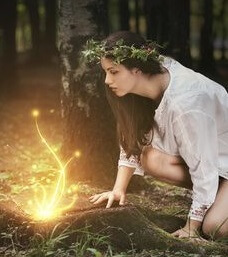 Fantasy: stories about impossible worlds.
Fantasy: stories about impossible worlds.Fantasy stories are set in imaginary worlds that could never exist, due to the presence of magic or some other violation of physical laws. May include imaginary species or places. Often involves a struggle of good vs. evil.
These are often long stories, because of the extensive details describing the story world.
Apart from the setting, the story itself is often an Adventure or other genre.
Subgenre Definitions for Fantasy
High Fantasy
Fantasy stories set in worlds which are separate from and have no intercourse with the real world (though sometimes a few characters can journey to them from our world). The fantasy world may be similar to the real world or drastically different. Much high fantasy takes place in worlds that resemble the real world as it was sometime between the iron age and the industrial revolution. As with other landscape genres, the fantasy world may be quite detailed.
Fantasy stories with settings that closely resemble the real world but with some magical elements added such as magicians, magic objects, hidden magical places, or magical creatures.
Sword and Sorcery
Fantasy stories that resemble medieval adventure stories. Settings feature technology that is post-Iron Age (so that swords exist) but pre-industrial revolution. They usually include magic and/or magical creatures. Combat is a dominant feature and the heroes have less noble aims than in High Fantasy.
Epic Fantasy
High Fantasy stories that depict the transition to a new age or world order, and possibly the end of the previous age.
Mythological
Fantasy stories based on myths and legends. E.g. Arthurian Fantasy, which is based on the tales of King Arthur.
Fairy Tale
Fantasy stories that retell popular fairy tales, often twisting them in new ways.
Paranormal Fantasy
Low
fantasy involving fantasy monsters or supernatural elements commonly found in Horror. However,
unlike Horror, Paranormal Fantasy does not use these elements solely to create
fear. In some cases, the monsters are the heroes or love interests.
Urban Fantasy
Low Fantasy stories set in contemporary cities. Often the settings resemble the cities found in Hard Boiled PI stories (large, dark, and corrupt), but with a magic or magical creature component.
Dark Fantasy
Fantasy stories that are darker in tone. In these stories, characters often suffer higher costs and humour is rare.
Magical Realism
Literary or mainstream stories in which an element of the unreal or magical is added to an otherwise realistic setting in order to create a surrealistic atmosphere.
Alternative Reality
Like Alternative History (see above), this subgenre posits a world similar to the real world but in which history unfolded differently. However, it includes fantasy elements such as magic, fantasy species, or a departure from the laws of physics.
4.2: Historical Fiction
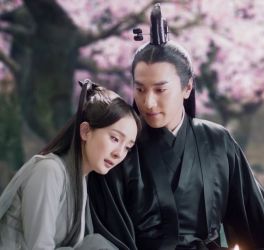 Historical Fiction: Stories set before the author's birth.
Historical Fiction: Stories set before the author's birth.Stories that take place before the author was born and are designed to educate the reader about history as well as entertain.
While historical settings can be found in many genres, subgenres, and crossovers, pure Historical Fiction is distinguished by the wealth of accurate information it includes about the chosen era, a feature that usually makes for long novels.
Subgenres of Historical Fiction
Historical novels and stories are usually divided into subgenres according to the historical period they are set in.
4.3: Western
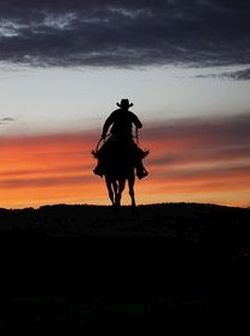 Western: tales of the Old West
Western: tales of the Old WestStories set in the American West in the years following the Civil War (roughly 1865-1900), though more often it is an idealized version of this setting. Present day Westerns are now becoming more common, set in cattle ranching areas or small towns. Generally, Westerns depict the uncivilized, rural West as virtuous (the home of such values as self-reliance, personal moral codes, redemption, etc.) while civilization and the East are portrayed as corrupt.
Subgenre Definitions for Westerns
Novels of the West
Historical
Fiction set in the American Old West. Similar in setting to Westerns,
but more historically accurate, less romanticized, and may not adhere to the same
thematic arguments. Should probably be considered a subgenre of Historical Fiction.
A Note on Futuristic and Historical Settings
Some stories feature futuristic settings that are particularly immersive
and evocative, but are not based on speculation regarding current trends. So even though they are labelled Science Fiction, they may
feel more like Landscape stories than Intellect stories. There probably should be separate genre definitions for Landscape Science Fiction and Speculative Science Fiction, but there aren't.
Another problem with existing genre definitions arises because Futuristic and Historical settings are often used as mere backdrops in genres such as Adventure, Romance, Mystery, etc.
Should you classify every story with a futuristic setting as Science Fiction?
Should you classify every story with a historical setting as Historical Fiction?
In my opinion, the answer to both questions is no. A story that has a historical setting, but does not try to educate the reader about historical facts, is not Historical Fiction. A story with a futuristic setting that does not attempt to educate the reader about the implications of technological and social change is not Science Fiction.
These stories are better described with two-word genre definitions -- the first word indicating the type of setting, and the second word for the type of plot and reader experience they offer (e.g. Historical Mystery, Fantasy Romance, Futuristic Adventure). They should be classifed as subgenres of the plot designation.
Unfortunately, there is no universally accepted system of genre designations and both publishers and librarians will classify books according to how they perceive their target readerships.
